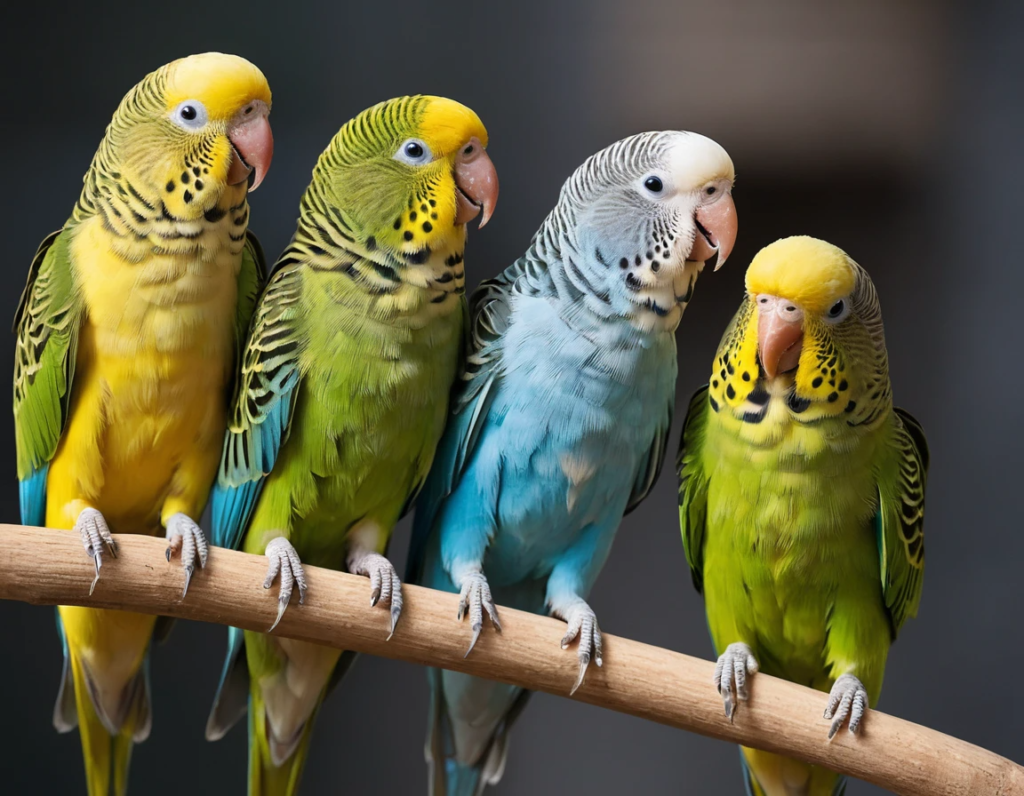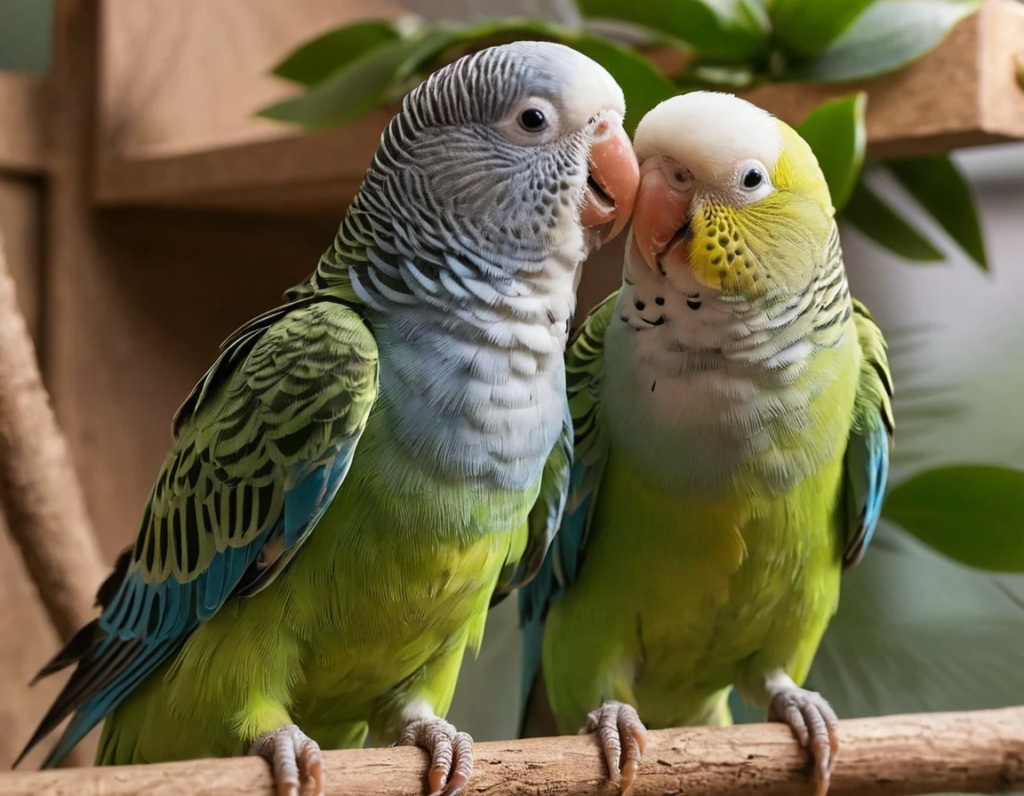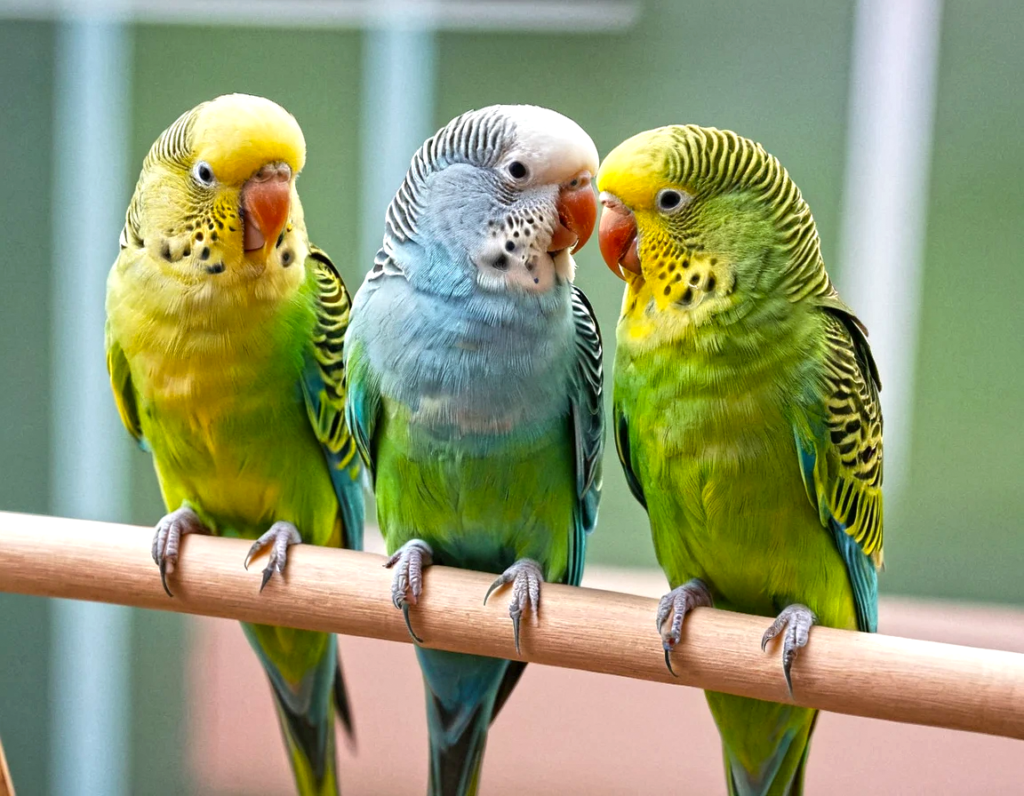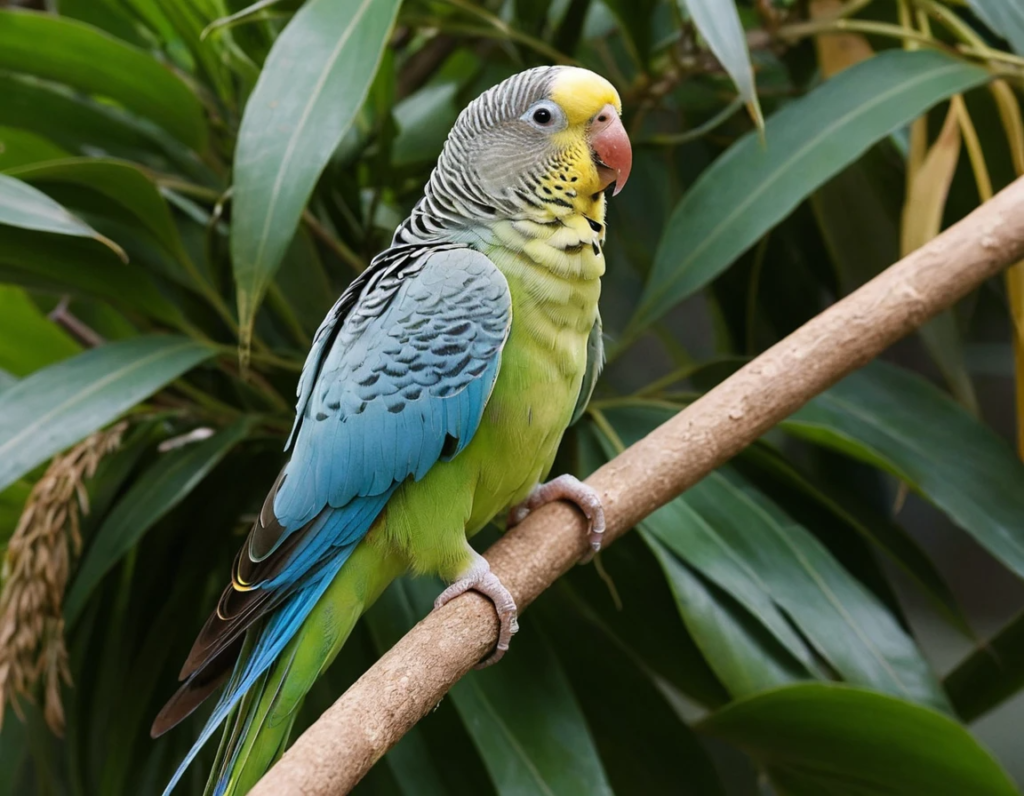
If you’ve ever fallen for the charm of a parakeet, you’ve probably wondered, “How long do parakeets live?” These little feathered bundles of joy can bring years of happiness, but just how many years are we talking? Let’s dive into the nitty-gritty of parakeet lifespan while sprinkling in some humor to keep things light—because, let’s face it, life (parakeet or human) should never be taken too seriously.
How Long Do Parakeets Live?
The lifespan of a parakeet depends on a variety of factors, including its species, environment, and care. Here’s a quick overview of some popular parakeet types and their average lifespans:
- Budgerigar (Budgie): 5–10 years in the wild, 10–15 years in captivity. With a balanced diet and love, some have even celebrated their sweet 16!
- Indian Ringneck Parakeet: 20–30 years. Talk about commitment! These beauties might just outlive your houseplants.
- Monk Parakeet (Quaker Parrot): 20–30 years. These little chatterboxes love a long party.
- Alexandrine Parakeet: 20–30 years. A regal bird with a regal lifespan.
- Bourke’s Parakeet: 5–8 years in the wild, but up to 15 years in captivity. (Just like us, they thrive in comfy homes.)
- Plum-headed Parakeet: 15–20 years. A splash of color for two decades? Yes, please!
Factors That Affect Parakeet Lifespan
Let’s break down the main elements that can either extend or cut short your feathered friend’s life—because who doesn’t want a happy, long-living bird?
1. Diet: You Are What You Eat
If your parakeet’s diet consists solely of seeds, you might be setting it up for an early exit. A balanced diet that includes pellets, fresh fruits, and vegetables is key. Think of it this way: if you ate only chips your entire life, you wouldn’t last long either. (Although chips are so tempting.)
- Add variety to their meals. Try offering spinach, carrots, or apple slices.
- Avoid toxic foods like avocado, chocolate, and caffeine. Yes, even if your parakeet begs for your morning latte—don’t cave in!
2. Exercise: The Fly Zone
Imagine being cooped up in one room your entire life. Not fun, right? Parakeets need space to stretch their wings and fly. A large cage and regular out-of-cage time are essential for their physical and mental well-being.
- Pro tip: Supervise them during free-flight sessions to avoid “flying into trouble” moments, like smacking into windows or mistaking the family dog for a friend.
3. Environment: Happy Homes Make Happy Birds
A parakeet’s environment plays a big role in its lifespan. Stress, loud noises, and a lack of mental stimulation can take a toll on their health. Keep their cage clean, provide toys, and avoid placing them near drafty windows or noisy appliances.
Fun fact: Parakeets are big fans of music. Just don’t blast heavy metal—unless your bird’s secretly a rocker.
4. Companionship: Feathered Friends or Lone Flyers?
Parakeets are social creatures. If you’re not home often, consider getting a second parakeet to keep your buddy company. Just be prepared for double the chirping (and double the poop). Bonus: watching parakeets interact is like having your own mini soap opera.
Signs Your Parakeet Is Aging
Just like us, parakeets show signs of aging. Here are a few things to look out for:
- Slower movements: Your once-energetic buddy might prefer a cozy perch over a playful swing.
- Feather changes: Older parakeets may lose some shine in their plumage or develop bald spots. (Hey, it happens to the best of us.)
- Appetite changes: They might eat less, so keep an eye on their weight.
- Less vocalization: Your chatty companion might quiet down with age.
If you notice any of these signs, a trip to the vet can help ensure your parakeet’s golden years are as comfortable as possible.

Keeping Your Parakeet Healthy
When it comes to parakeet care, the internet is full of advice. Here are some of the top searched keywords (and their answers) to help you navigate your way to becoming the best parakeet parent:
- How to increase parakeet lifespan: Provide a balanced diet, a clean environment, and regular vet checkups.
- Parakeet health problems: Common issues include respiratory infections, mites, and obesity. Always consult an avian vet if something seems off.
- Parakeet cage size: Bigger is better! Aim for a minimum of 18x18x24 inches for a single bird.
- How long do budgies live in captivity? With proper care, 10–15 years.
Funny Moments with Parakeets
Parakeets aren’t just pets; they’re comedians. Here are a few humorous observations about these little characters:
- They’ll spend hours mimicking your laugh, but only when you’re trying to have a serious conversation.
- Parakeets have a knack for dropping their food… outside the cage. Think of it as “floor seasoning.”
- Ever tried to teach a parakeet to talk? They’ll probably learn one word… and repeat it endlessly, usually at 3 a.m.
Saying Goodbye: When the Time Comes
No matter how well you care for your parakeet, their time will eventually come. It’s heartbreaking, but the love and joy they bring make it all worthwhile. Celebrate the memories and the laughter they brought into your life.
Final Chirp: How to Keep Your Parakeet Thriving
Owning a parakeet is a rewarding experience. These tiny, colorful creatures have big personalities and even bigger hearts. By giving them the best care possible, you’ll ensure they stick around for many happy years.
So, whether you’re a first-time bird owner or a seasoned parakeet pro, remember: your feathered friend relies on you. Treat them with love, and they’ll repay you with endless chirps, hilarious antics, and the occasional (accidental) wing slap.
Now, go forth and spoil your parakeet! After all, they’re not just birds—they’re family.
Parakeets and Their Unique Personalities
Every parakeet has its own flair, almost like they’re tiny celebrities in feathered suits. You might have a parakeet who’s a fearless adventurer, climbing to the top of their cage like it’s Mount Everest. Others might be more reserved, preferring to observe the world with an air of sophisticated judgment.
It’s important to get to know your parakeet’s personality and cater to their individual needs. Is your bird playful? Offer a variety of toys, like swings, bells, and mirrors. If they’re more of a foodie, experiment with safe fruits and vegetables. Fun fact: parakeets have been known to show favorites—carrot one day, apple the next. Talk about picky eaters!
Building a Bond with Your Parakeet
Bonding with a parakeet isn’t instant—it’s a journey. Earning their trust requires patience, treats, and a little bit of parakeet-approved bribery. Here’s how to become your bird’s best friend:
- Speak Softly: They’re not fans of loud noises. Use a calm, gentle voice, and they’ll start associating you with good vibes.
- Hand-Training: Slowly introduce your hand into their cage, offering treats like millet. Over time, they’ll step onto your hand (and eventually your heart).
- Consistent Interaction: Parakeets thrive on routine. Spend time talking, whistling, or even just hanging out near their cage. Bonus: they might start mimicking you!
Fun DIY Enrichment Ideas
Who says keeping a parakeet entertained has to be expensive? With a little creativity, you can turn everyday items into parakeet-approved fun:
- Paper Shreds: Simple, cheap, and endlessly entertaining. Parakeets love shredding paper—it’s like their version of popping bubble wrap.
- Homemade Perches: Use untreated wood from outside (cleaned thoroughly) to create natural perches. Different textures keep their feet healthy.
- Foraging Toys: Hide treats in a small box or paper towel roll and let them work for their snack. Who doesn’t love a challenge?
Parakeet Sleep Patterns
Did you know parakeets are sticklers for sleep? They need 10–12 hours of uninterrupted rest each night. Covering their cage with a breathable, lightweight cloth creates a cozy environment that mimics their natural sleeping habits.
Pro tip: If your parakeet squawks at night, check for disturbances like bright lights or sudden noises. They might be small, but they’re picky sleepers. (No wonder they relate to us so well!)
Lifespan Expectations: Realistic vs. Optimistic
While most parakeets live between 10–15 years, some lucky ones defy expectations. Guinness World Records once recorded a budgie named Charlie who lived to be 29 years old! While rare, it’s a reminder that with top-notch care, you could enjoy your parakeet’s company for decades.
Still, it’s important to stay realistic. Celebrate each day with your feathered friend and focus on making their life as rich and fulfilling as possible.
Wrapping It Up: Your Parakeet’s Legacy
At the end of the day, owning a parakeet is about more than just keeping them alive—it’s about creating a life full of joy, adventure, and connection. Whether they’re mimicking your laugh, stealing your snacks, or performing acrobatic stunts in their cage, parakeets know how to leave a lasting impression.
Cherish the moments, document their quirks, and don’t forget to show off those adorable parakeet selfies. Because when your little bird is happy, you can bet they’ll make your life brighter, too.
Got more parakeet questions or funny stories to share? Let me know, and let’s keep the parakeet love going!
(FAQs) about the lifespan of parakeets:
1. How long do parakeets typically live?
Answer: Parakeets generally live between 5 to 15 years, depending on their species, care, and living conditions. With optimal care, some parakeets can live even longer.
2. What factors affect a parakeet’s lifespan?
Answer: Several factors influence a parakeet’s lifespan, including:
- Diet: A balanced diet with seeds, pellets, fruits, and vegetables is essential.
- Housing: A spacious and clean cage is crucial for their well-being.
- Exercise: Allowing parakeets to fly and exercise improves their health.
- Veterinary care: Regular check-ups and prompt treatment for illnesses are vital.
- Environment: Protection from predators, extreme temperatures, and drafts is necessary.
3. Which species of parakeet lives the longest?
Answer:
- Budgerigars (Budgies): Typically 7–15 years.
- Indian Ringneck Parakeets: 15–20 years.
- Alexandrine Parakeets: 20–30 years.
- Monk Parakeets: 15–20 years.
- Quaker Parakeets: 20–30 years.
4. Can stress shorten a parakeet's lifespan?
Answer: Yes, stress from loud noises, isolation, aggressive cage mates, or sudden environmental changes can significantly reduce a parakeet’s lifespan.
5. Do parakeets live longer in captivity or in the wild?
Answer: Parakeets generally live longer in captivity due to protection from predators, consistent food supply, and access to veterinary care. In the wild, their lifespan is often shorter due to predators, diseases, and environmental challenges.
6. How can I tell if my parakeet is aging?
Answer: Signs of aging in parakeets include:
- Duller or sparse feathers.
- Reduced activity or energy levels.
- More time spent sleeping.
- Changes in vocalizations.
- Increased susceptibility to illness.
7. What should I do to maximise my parakeet’s lifespan?
Answer:
- Provide a nutrient-rich diet.
- Ensure daily exercise and mental stimulation.
- Keep their cage clean and spacious.
- Take them for annual veterinary check-ups.
- Offer companionship, either from you or another parakeet.
8. Can parakeets die of loneliness?
Answer: While not directly, prolonged loneliness can lead to depression, lack of appetite, and weakened immunity, which may reduce their lifespan. Parakeets are social birds and thrive with companionship.
9. Is it true that parakeets can live up to 30 years?
Answer: Yes, larger parakeet species like Alexandrine or Quaker Parakeets can live up to 30 years with excellent care. However, smaller species like budgies typically don’t live as long.
10. What are common health issues that affect parakeet lifespan?
Answer: Common issues include:
- Obesity or malnutrition from an unbalanced diet.
- Respiratory infections from poor air quality.
- Feather plucking due to stress or boredom.
- Parasites or bacterial infections.


